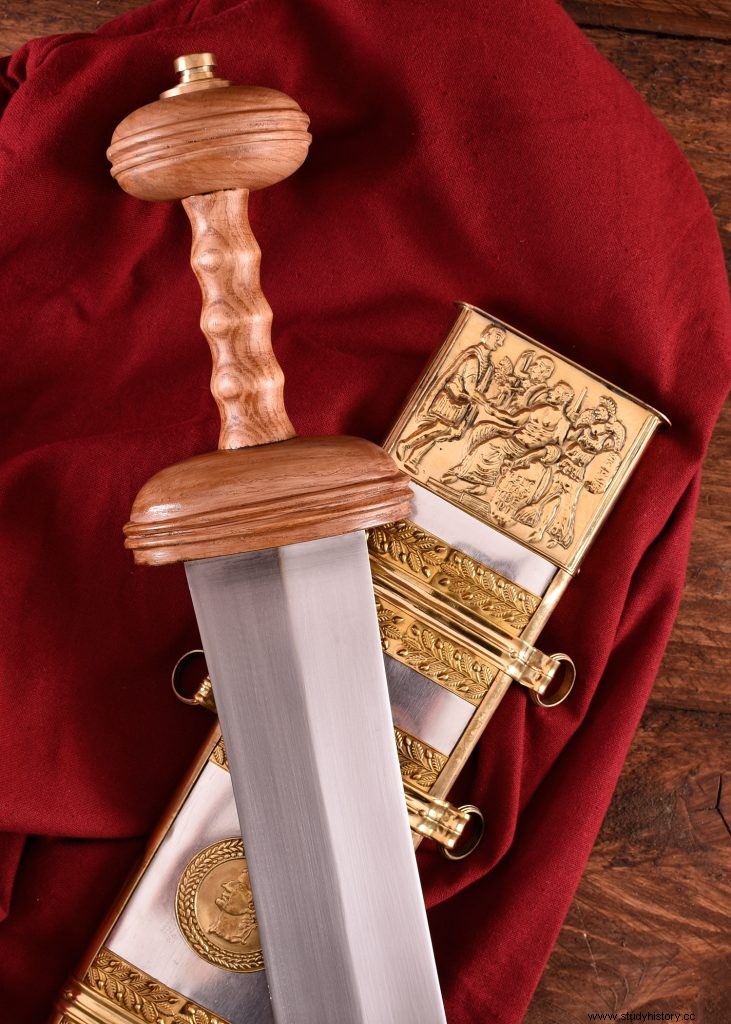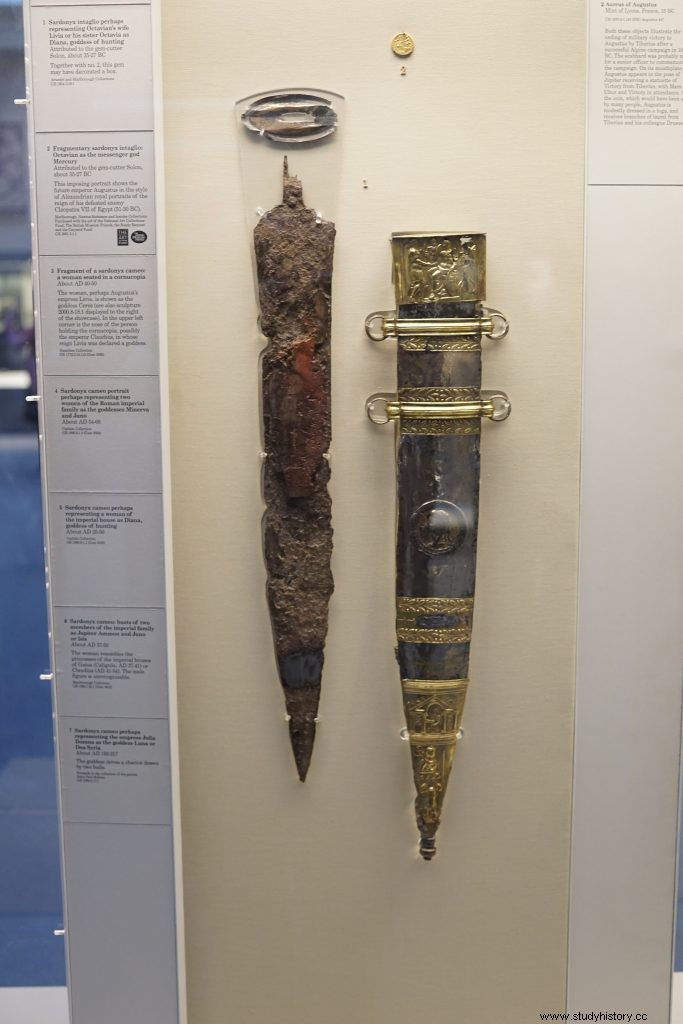The gladius is a historical Roman sword and served as a standard weapon for legionnaires for centuries. Since its emergence in the 3rd century B.C. The sword was used until about the 3rd century AD. During this period, the gladius was the most important offensive weapon for infantry and cavalry. Its simple and robust construction made it the perfect weapon for close combat.
History and Overview
The origin of the name of the gladius has not been sufficiently clarified and is still a source of discussion among historians today. Some researchers believe that the sword's name derives from the Latin word clades (injury or wound). Other historians derive the name from the Celtic term kladyos (sword).
The development of the sword dates back to the 3rd century BC. dated. During the Punic Wars (264 BC – 146 BC), the Romans probably adopted this type of sword from the Celtiberians. The first two Punic Wars in particular played a role here. Because of this origin, the weapon is also called Gladius hispaniensis or Spanish sword.
In different variants, the gladius remained the main close combat weapon of the Roman infantry and cavalry as a Roman sword until the 3rd century AD. The Roman legionnaires differed markedly in their equipment and organization from many other armies and enemies of their time. The legionnaire did not use a spear, ax or club as his main attack weapon, but his short Roman sword. Precisely because of its simplicity, the gladius established itself as one of the most important cornerstones of the strategic and tactical superiority of the Roman troops. The legions were characterized in particular by mobility and disciplined individual training. The strongest and numerically most important force were the foot soldiers of the infantry, for whom the Roman gladius was the ideal weapon.
Areas of application and use of the Gladius
In fencing, this type of sword was primarily used as a thrusting weapon. It can be used as a slashing weapon, but is less common. This has to do with the organization and formation of Roman legions, which were mostly closely echeloned. Slamming moves require a greater range of motion that would have disabled or injured a nearby Legionnaire.


The training on the melee weapon was of great importance for every legionnaire. First of all, the attacks and movements had to be trained on a wooden pole before the attack was aimed at human opponents. During training and practice, wooden swords were used, the shape of which was reminiscent of a Roman sword. In order to strengthen the muscles of the legionnaires, the training devices were heavier than the actual weapons. With advanced training, the exercises were also carried out with blunt metal weapons, which, however, are associated with a higher risk of injury.
In actual combat, legionnaires performed targeted stabs in the direction of the opponent's head and neck. The aim was to efficiently incapacitate or kill the opponent. Other vital parts such as the chest were mostly protected by armor, while the legs with the relatively short gladius were difficult to reach. The scotum, a massive shield, is of great importance in combat with the gladius. With the Scotum, opponents were actively pushed aside and opposing stabs or punches were repelled.
It could also be used as a slashing weapon, especially in connection with free fights outside of the Legionnaires formation. In difficult terrain or in fortresses and buildings, other fencing methods were used in addition to stabbing. Free combat was therefore also part of the training.
Special features, shapes and designs of the Gladii
Archaeologically, the Gladius can be divided into different types of construction. These have their names from where they were found, whereby three basic forms can be distinguished (in addition to various transitional versions):the Mainz type, the Hispanicum type and the Pompeii type. In its earliest form from the 3rd century B.C. The gladius had a total length of 75 to 85 centimeters and a weight of up to 1000 grams. It measured 5 centimeters at its widest point.
The mostly tapered shape of the leaf is characteristic of the style. However, the Pompeii type, which has a straight blade shape, must be distinguished from this. This variant, which was created later, was characterized, among other things, by a significantly lower weight. The blade is slightly longer than the previous types, but at the same time narrower and therefore lighter. The Pompeii type was used from about the 1st century.
Maybe someone remembers:The Gladius plays a small supporting role in Asterix and Obelix. In one scene, Obelix is supposed to defend himself against the centurion Nixalsverdrus with a wooden training gladius. However, the purpose of the exercise is not entirely clear to him, so he prefers to play with his fist due to lack of time.
Distinction from other swords
The gladius found a kind of successor from the late 2nd century through the spatha. This weapon was similar to the gladius in terms of shape, but is characterized by a blade that is about 20 centimeters longer. This makes it better suited for cavalry use. With the increasing importance of combat on horseback, the spatha gradually replaced the gladius until it had largely supplanted it in late antiquity.
